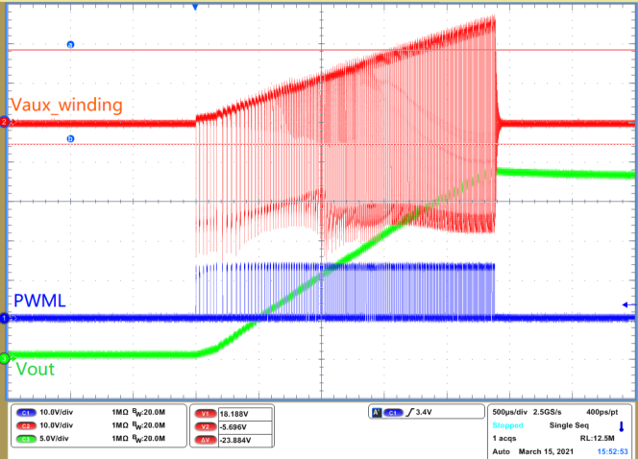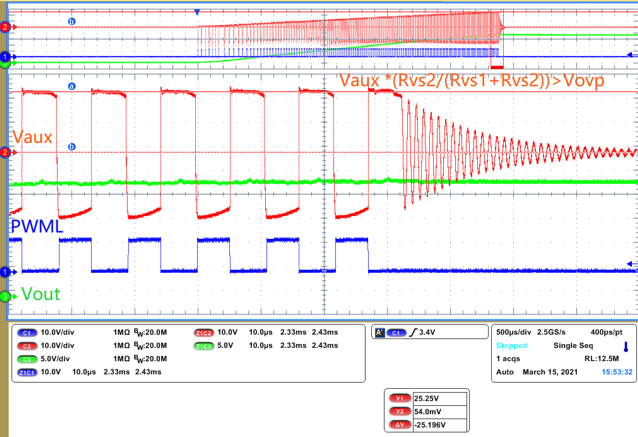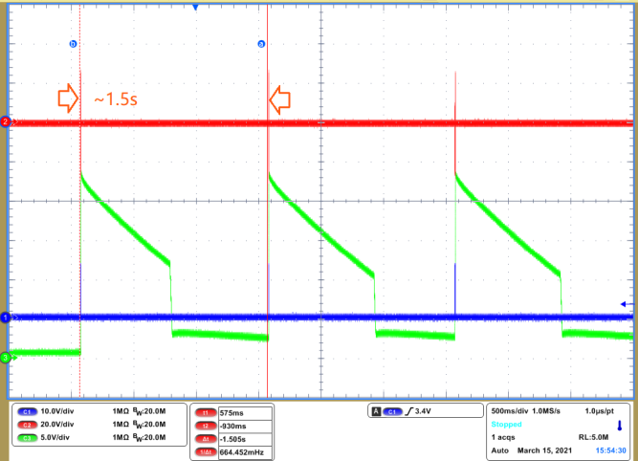SLUAAF9 September 2021 UCC28782
- Trademarks
- 1 Initial Board Visual Inspection and Start-up Check
- 2 Typical System Operating Waveforms
- 3Typical System Protection Waveforms
- 4Common Issues and Solutions
- 5References
3.2 Output Overvoltage Protection (OVP)
Output voltage is detected by controller through VS pin, However, it is not recommended to probe VS pin directly as the noise introduced by probing could cause protection mis-triggering. Instead, AUX winding voltage can be used for identifying whether OVP happens. If the divided voltage on VS pin exceed OVP threshold for three consecutive pulses, OVP is triggered.
 Figure 3-3 OVP Delay to Action
Figure 3-3 OVP Delay to Action Figure 3-4 OVP Delay to Action (Zoom
In)
Figure 3-4 OVP Delay to Action (Zoom
In) Figure 3-5 OVP Action
Figure 3-5 OVP ActionCH2: AUX winding voltage (Vaux), CH1: PWML, CH3: Output voltage.